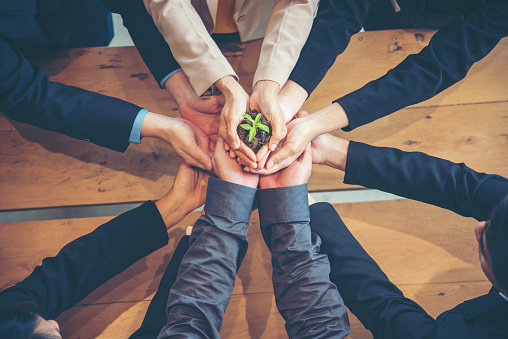
Finnish technology leaders putting people and the planet at the core of their digital transformation strategies

How do companies like KONE, Wipak and Huhtamäki innovate for better and more sustainable future?
Whole Value chain visibility is important
Antti Valtokari, CIO of Huhtamäki, a Finnish consumer packaging company, is convinced that together people and enterprises can make a difference. It is not every company on their own struggling with sustainable actions. Sustainability is a joint effort throughout the supply chain, from the innovations all the way to the responsible exit. Sustainability is not seen as a separate function in Huhtamäki, but as a solid part of the business. For example the sustainability OKRs are tied to management’s rewarding system.
We need to take small steps towards bigger goals in our everyday decision-making and involve all stakeholders as well as the surrounding society into it too, as especially the investors are now looking into the sustainability reporting more closely. Digitalisation and value chain data visibility are the means to make more sustainable decisions. To reach the goals, KPIs have to be set and measured in everyday decision-making. Concrete example is circular economy thinking for the consumer packaging and automated recycling – in the future there will be communication between packaging labels and the recycling machines.
Huhtamäki announces in their report that in 2030 they will have solved the sustainability questions. Mr. Valtokari says this is an ultramarathon with small leaps, such as material positivity. Close care is taken to see into options in renewable energies, the use of raw materials things that are in our control. It is important to base all decisions into facts and science.
Sustainability drives business and innovation, as well as operational efficiencies, lower energy use and less waste
KONE, a Finnish elevator and escalator manufacturer, is one of the most innovative companies in the world and the company SVP and CIO Antti Koskelin recognizes the pressure and the responsibility the innovation title brings. Sustainability is present in the short as well as in the long-distance plans in everything they do. The demand to know the origins of the components comes nowadays from the stakeholders; people are genuinely interested in how sustainably each company runs its business.
Full visibility is the key, both internally and externally when executing new business models. That is why it is of great importance to have everyone in the supply chain reporting on their actions and supply enterprises with the right tools to make the reporting easy. And it’s not only at the time of reporting, when we struggle to find the right figures, but the process has to be integrated so well that the numbers come automatically from our systems and data base as everything has already been reported accordingly. This is a good way to look into the mirror and evaluate how sustainable the actions taken are and have been. It all must be transparent and communicated clearly so everyone in the company knows when they take actions, if it is the sustainable option, or the more sustainable option.
Sustainability is good business and with the right software you are able to manage full visibility
Hery-Christian Henry, Group Head of Brand and Sustainability at Wipak announces that Wipak’s aim is to be carbon neutral by 2025. That is a great promise from a company, whose business runs in plastic packaging. The path there required firstly to find out the existing situation and to understand the whole process, which took the company a year and it would have not been possible without the opportunities digitalisation brings. The understanding of the whole supply chain would not have happened without modern digital tools and data to support the decisions. The whole value chain must be included to pilot new innovations in sustainability; tests are made together with consumers and material suppliers on how carbon neutral or sustainable we can get. From the carbon footprint only 5% is in in Wipak’s own hands, the rest comes from the supply chain.
EU taxonomy brings longed normative and regulations into the business life. It is a good place to start to innovate. As a company, you have the responsibility to give information and advice the consumers. The choice must be clear and easy in the consumer goods – choose the sustainable or the more sustainable one. Hery-Christian Hery suspects that soon calculating the carbon footprint is as normal as counting calories.
Management must be ready and committed to make decisions with sustainability as priority and the sustainability data must be in the level that supports the decision-making and taken actions. Sustainable business is good business and already profitable to everyone in the value chain. Also, it is of great importance in financing the business, as Wipak currently has financial instruments with interest rate tied straight to the product.
Wipak calculates the carbon footprint all the way from the start until it hits the consumer’s table. For example, when asking in Finland from people under 30, if they were willing to pay 10 cents more of a pack of coffee if it was 60-70% more sustainable, over 90 % was ready to pay those extra cents. This will cover the costs for the whole supply chain.
To highlight it again, it all starts with the surrounding environment and the people consuming the products. Involving everyone into the process, companies get valuable information and can innovate on future solutions towards more sustainable world.
The blog is a summary of Keto’s webinar held on 10th March 2022.
